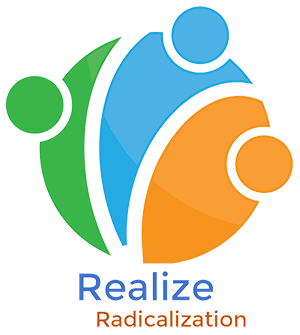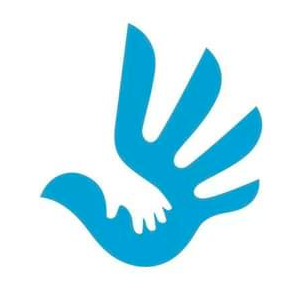COVID-19 & Human Rights in Canada: Lessons Learned and Way Forward
Khujista Rahman, Researcher, CRRIC
Human rights are inalienable rights. These rights are inherent to us all, regardless of nationality, sex, national or ethnic origin, colour, religion, language, or any other status – yet we continue to see human rights violations across the globe.
The theme of international Human Rights Day 2021 was “Equality, Reducing Inequalities, and Advancing Human Rights”. Given the fact COVID-19 has deepened poverty, raised inequalities, and gaps in human rights protection, we decided to dedicate a webinar to discussing COVID-19 and its impact on human rights. Our esteemed speakers, Sarah Lugtig and Dr. Kawser Ahmed responded to two questions:
- In your opinion and/or experience, how has COVID-19 disrupted lives and impacted human rights in Canada?
- What kind of measures do you feel should be in place to help navigate these human rights violations that have risen from COVID-19?
This piece highlights the impact of COVID-19 on human rights in Canada, as well as some strategies for policymakers and service providers to adopt to ensure that the impact of their actions is equitable across all demographics. We have summarised the discussion from our webinar – critical conversation that can contribute to shaping human rights practices moving forward in our communities, so we are better equipped to navigate crises while upholding human rights.
COVID-19 has transformed every aspect of our lives, whether professionally, personally, or emotionally. It is also evident that the decisions made by our policymakers in an attempt to manage the outbreak have had unintended consequences across populations – the most affected were indigenous and racialized populations, essential workers, women, children, seniors, persons with disabilities, and refugee populations.
Lessons Learned
Seniors
- The discriminatory attitude from youth have contributed to detrimental effects on the health and longevity of seniors who were living with and without COVID-19
- Older adults faced elder abuse – lockdowns resulted in elders being trapped with their abusers who were family in caregiving roles or personal support workers
Racism
- Racialized communities, such as the indigenous, person of colour, and 2SLGBTQ populations have faced biases in the healthcare system while seeking services
- BIPOC workers have faced unsafe labour conditions, workplace violence, and race-based discrimination when searching for employment, as well as lacked social protections
- There was a rise in violence against East Asians – racial slurs, physical violence, and workplace discrimination
Family Status
- Lockdowns resulted in the closure of schools and have impacted working parents and caregivers. Some must go into the workplace, while others are working from home (but must supervise, feed, and manage disruptions from their children). This has led to job loss, resignation, anxiety, and children not having adequate childcare or access to education.
Structural Inequalities
- Authorities have had difficulty contact tracing indigenous populations living in remote communities in Canada.
- Many indigenous communities do not have access to cellular networks and were unreachable, which resulted in a data gap and inadequate reporting.
Essential Workers
Studies have indicated that essential workers have increased depression, anxiety, and burnout due to
- Essential workers such as nurses and personal support workers were often not provided with paid leave/vacation or sick leave
Persons with Disabilities
- Many governments failed to immediately address challenges in ensuring special education needs and support for learners with disabilities
- Distance learning was not often accessible, leading to students with disabilities being left behind
- Many women with disabilities were unable to report or call helplines, as many were not equipped with interpretation services for Deaf and Deafblind persons
- Persons with disabilities were at a higher risk of extreme poverty leading to homelessness than the general population
Refugee Population
- Refugees and asylum seekers lacked dignified access to vaccines
- Migrants have been stranded at border points and experienced verbal and physical violence
- Border closures have affected not only the movement of refugees but supplies, aid, humanitarian workers, and investigative agencies
- Lacked access to education, technology, and connectivity
- Asylum claimants were already struggling with finding access to affordable housing due to their immigration status, but COVID-19 further deepened the gap
Way Forward
Policymakers and service providers should adopt a human rights-based approach to policy and program development. Using a human rights lens includes rights holders to be in the decision-making process which in turn empowers those seeking protection and fosters equitable development decisions in our communities.
- Governments should make efforts to adopt strategies that support all students through closures – monitoring students most at risk and ensuring students receive printed or online materials on time, with needs-based attention to students with disabilities who may require accessible material
- Authorities should take steps to mitigate gendered impacts and ensure that actions do not further deepen the gender gap
- Measures designed to assist workers affected by the pandemic should ensure the assistance of workers in informal work and service industries
- Governments should ensure equal access to emergency and/or essential services to people with disabilities, racialized populations, and seniors
- Governments should take steps to reassure vulnerable populations, such as migrants that they do not risk deportation if they access lifesaving care, especially in the context of seeking testing or treatment for COVID-19
That being said, it is easy to write words in a legal document, but it is difficult to make them meaningful. In order to uphold these human rights, we need to have conversations within our community, activists, human rights lawyers, and implementing professionals so we can work together to fulfill what is written.
You can access our COVID-19 & Human Rights in Canada webinar on YouTube channel





